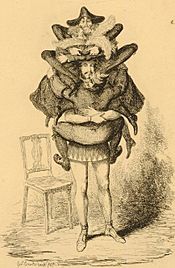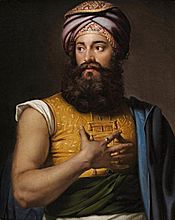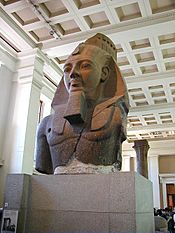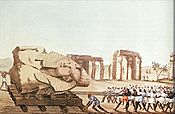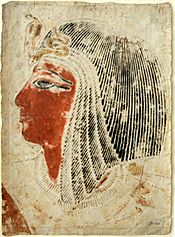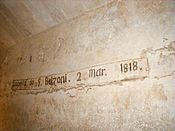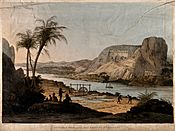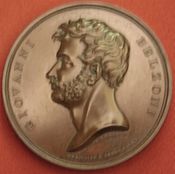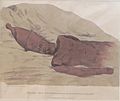Giovanni Belzoni facts for kids
Quick facts for kids
Giovanni Battista Belzoni
|
|
|---|---|
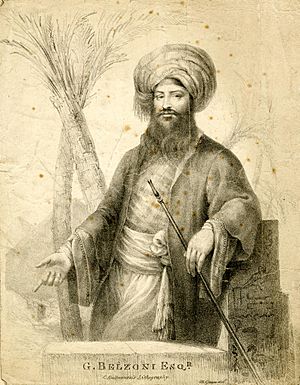
Giovanni Battista Belzoni
|
|
| Born | 5 November 1778 |
| Died | 3 December 1823 (aged 45) |
| Nationality | Italian |
| Known for | Egyptian antiquities |
| Spouse(s) | Sarah Banne |
Giovanni Battista Belzoni (born November 5, 1778 – died December 3, 1823) was an amazing Italian explorer and one of the first archaeologists to study Egypt. People sometimes called him The Great Belzoni because of his many discoveries.
He is famous for moving a giant, seven-tonne statue head of Ramesses II to England. He also cleared away tons of sand from the entrance of the huge temple at Abu Simbel. Belzoni found and explored the tomb of Seti I, which some people still call "Belzoni's Tomb." He was also the first person in modern times to go inside the Pyramid of Khafre, which is the second largest pyramid at Giza.
Contents
Giovanni Belzoni's Early Life
Belzoni was born in Padua, Italy. His father was a barber and had many children. When Giovanni was 16, he moved to Rome and studied how water systems work. He thought about becoming a monk, but when French soldiers took over Rome in 1798, his plans changed. In 1800, he moved to the Netherlands and worked as a barber.
In 1803, Belzoni moved to England. There, he married an Englishwoman named Sarah Banne. Belzoni was a very tall man, about 6 feet 7 inches (2 meters) tall! He and Sarah joined a traveling circus. They performed amazing feats of strength and agility at fairs and on the streets of London to earn money. By 1804, he was performing at Astley's Amphitheatre, a famous circus. Belzoni was also interested in magic shows and used special magic lanterns in his performances.
Adventures in Ancient Egypt
In 1812, Belzoni left England and traveled through Spain, Portugal, and Sicily. In 1815, he arrived in Malta, where he met an important person from Muhammad Ali, the ruler of Egypt. Belzoni wanted to show Muhammad Ali a new machine he invented to lift water from the Nile River. The machine worked well, but the ruler did not approve the project. Without a job, Belzoni decided to keep traveling.
A British consul in Egypt, Henry Salt, heard about Belzoni. He asked Belzoni to go to the Ramesseum temple in Thebes. There, Belzoni skillfully moved a giant statue head of Ramesses II, known as the "Younger Memnon." This huge statue weighed over 7 tons! It took him 17 days and 130 men to pull it to the river. He used levers to lift it onto rollers. Then, his men used ropes to drag it. On the first day, they only moved a few yards. But by August 12, they reached the river and loaded it onto a boat to send to England. Today, this statue is a famous display at the British Museum in London. The ruler of Egypt, Muhammad Ali, gave Belzoni special permission to move this and other ancient stones.
Belzoni continued his explorations. He visited the temple of Edfu, Elephantine island, and Philae. In 1817, he cleared the sand from the entrance of the huge temple at Abu Simbel. He also dug at Karnak and opened the tomb of Seti I in the Valley of the Kings. This tomb is sometimes still called "Belzoni's Tomb." He was the first person in modern times to enter the Pyramid of Khafre at Giza. He also explored the Bahariya Oasis and found the ruins of Berenice by the Red Sea.
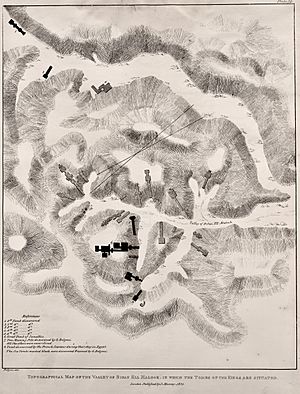
In 1819, Belzoni returned to England. The next year, he published a book about his travels and discoveries called Narrative of the Operations and Recent Discoveries within the Pyramids, Temples, Tombs and Excavations in Egypt and Nubia, &c. In 1820 and 1821, he also showed models of the tomb of Seti I at the Egyptian Hall in London. In 1822, Belzoni showed his models in Paris.
In 1823, Belzoni began a new journey to West Africa, hoping to reach Timbuktu. He was not allowed to pass through Morocco, so he took a different route along the coast. He reached the Kingdom of Benin but became very sick in a village called Gwato (now Ughoton). He passed away there. Some accounts suggest he was attacked and robbed. In 1829, his wife published his drawings of the royal tombs at Thebes.
Remembering Giovanni Belzoni
A special medal showing Belzoni's profile was made in 1821 by Sir Edward Thomason. Years later, in 1859, a sculptor named Rinaldo Rinaldi created a large medallion to honor Belzoni in his hometown of Padua.
Giovanni Belzoni was played by actor Matthew Kelly in the 2005 BBC TV show Egypt.
The poet Horace Smith wrote a poem called "Address to the Mummy in Belzoni's Exhibition."
Images for kids
See also
 In Spanish: Giovanni Battista Belzoni para niños
In Spanish: Giovanni Battista Belzoni para niños
- List of megalithic sites
- Howard Carter
- Flinders Petrie
- Anastasini Circus


